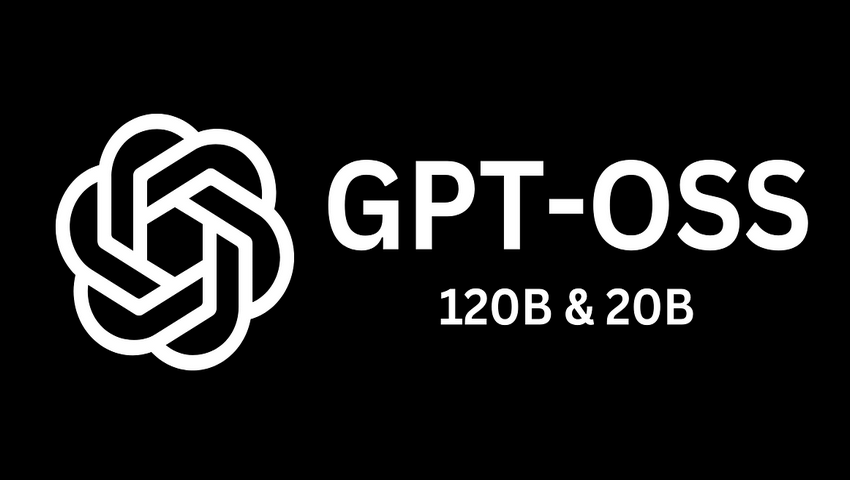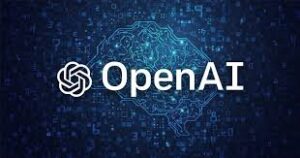https://theworldfinancialforum.com/participate/

This week OpenAI has unveiled two open-weight language models – gpt-oss-120b and gpt-oss-20b. These new models are designed to bring powerful reasoning capabilities, flexible tool use, and developer-level customization to a broader audience, all under the permissive Apache 2.0 license.
Unlike the proprietary GPT-4 or GPT-4o models hosted exclusively on OpenAI’s cloud infrastructure, the gpt-oss models are available for anyone to download and run locally or through a variety of deployment platforms, enabling lower-latency, on-device inference, and enhanced data control.
The gpt-oss-120b and gpt-oss-20b models are engineered to perform well on reasoning-intensive tasks while remaining resource-efficient. The flagship 120b model contains 117 billion parameters and activates only 5.1 billion parameters per token thanks to a Mixture-of-Experts (MoE) architecture, making it possible to run the model on a single 80 GB GPU. Meanwhile, the 20b version uses 3.6 billion active parameters per token, requiring just 16 GB of memory – ideal for consumer laptops and edge devices.
Both models support 128,000-token context windows, chain-of-thought (CoT) reasoning at low, medium, and high effort levels, and structured output formats. They also integrate with tool-use capabilities such as Python code execution and web search – essential for powering agentic workflows.
Trained using OpenAI’s most advanced techniques, including high-compute reinforcement learning, supervised fine-tuning, and a post-training alignment process, the gpt-oss models share a developmental lineage with OpenAI’s o-series models (e.g., o3, o4-mini).
The models rely on Rotary Positional Embeddings (RoPE), locally banded sparse attention, and grouped multi-query attention to balance inference speed and performance. Pre-training focused on STEM, programming, and general knowledge, with tokenization based on a superset used by GPT-4o, known as o200k_harmony – also open-sourced.
OpenAI emphasizes that safety has been foundational in the development of these open models. The company filtered pre-training data to avoid exposure to high-risk topics (e.g., chemical, biological, nuclear domains) and used deliberative alignment and instruction hierarchies to enhance robustness against adversarial prompts.
To simulate worst-case misuse scenarios, OpenAI adversarially fine-tuned the models on sensitive domains like cybersecurity and biology. However, even with deliberate attempts to “weaponize” the models using their own training stack, the models failed to reach high-risk capability levels as defined in OpenAI’s Preparedness Framework. Independent reviews confirmed these findings.
Additionally, OpenAI has launched a Red Teaming Challenge with a $500,000 prize pool to further surface any novel safety vulnerabilities, encouraging the global AI community to collaborate in stress-testing the models.
The models are freely available on Hugging Face, quantized in MXFP4 for efficient performance. OpenAI has also released tooling for inference in PyTorch, Apple Metal, and provided harmony format renderers in Python and Rust.
Deployment partners include major platforms like Azure, AWS, Hugging Face, Vercel, Ollama, llama.cpp, and more. On the hardware front, collaboration with NVIDIA, AMD, Cerebras, and Groq ensures optimized support across devices.
Microsoft is also bringing GPU-optimized local versions of gpt-oss-20b to Windows via ONNX Runtime, available through Foundry Local and the AI Toolkit for Visual Studio Code.
Despite their capabilities, gpt-oss models are text-only and lack multimodal features such as image or audio understanding. Their hallucination rates remain significantly higher than newer proprietary models, with gpt-oss-120b hallucinating in 49% of PersonQA benchmark responses, compared to 16% for o1.
With gpt-oss, OpenAI is reopening the door to transparent, decentralized AI development at scale. Balancing powerful capabilities with safety-conscious architecture, these models empower researchers, startups, and developers to explore, fine-tune, and innovate with world-class language models.
OpenAI has taken a big step in the AI world by launching GPT-oss — two powerful open‐weight language models called gpt-oss-120B and gpt-oss-20B — its first open-weight releases since GPT-2 in 2019. The Register+3Business Insider+3TechCrunch+3 What makes this move noteworthy is not just the performance, but the openness: these models can be downloaded, run, and fine-tuned locally under a permissive license. The Register+3Business Insider+3PYMNTS.com+3
What Are the New Models & What Can They Do
Two sizes, different uses:
gpt-oss-120B is the larger model. It needs substantial hardware (e.g., a single high-end GPU, possibly 80 GB) to run smoothly. The Times of India+2The Economic Times+2
gpt-oss-20B is the smaller one, designed to run on more modest machines (e.g. laptops with ~16 GB RAM). The Times of India+2The Economic Times+2
Licensing & openness: These models are “open-weight”—their weights (i.e., the trained parameters) are fully downloadable. Developers can inspect, tweak, and run them locally. They are released under the Apache-2.0 license, which is quite permissive. The Times of India+3Business Insider+3TechCrunch+3
Capabilities:
They support reasoning tasks, function calling, and tool use. The 120B model is said to approach the open mini-proprietary models of OpenAI (e.g. o4-mini) in performance. The Times of India+3Business Insider+3The Register+3
The 20B model, while smaller, shows solid performance considering its resource requirements. It’s built for more accessible, local use cases. The Times of India+2QuData.com+2
Why This Is a Big Deal
Democratization of AI
By releasing open-weight models, OpenAI is giving more people access to powerful AI tools. Researchers, startups, hobbyists — anyone with hardware can now run advanced models without relying entirely on API calls or cloud services. This can reduce latency, improve privacy, and give more control. India Today+2The Times of India+2Boost to Innovation
Local fine-tuning, tweaking, and customizing models for specific domains (healthcare, law, regional languages, etc.) becomes more feasible. Open access often leads to creative uses and unexpected discoveries.Competition & Openness Pressure
Other AI lab players (Meta, DeepSeek, etc.) have been pushing open or open-weight models. OpenAI’s move raises the bar in the “open vs proprietary” debate. Business Insider+2PYMNTS.com+2Better for Sensitive Data
Organizations wary of sending data to cloud APIs can now run models on-premises, reducing exposure risks.
What’s Still Not Perfect
OpenAI has made strides, but there are still trade-offs and open questions:
Performance vs. Resource Costs
Even though the open models are powerful, to get their best performance you need beefy hardware. For many users, especially in smaller or resource-limited settings, the hardware requirement could still be a barrier.Hallucinations & Reliability
As with any current large language model, issues like hallucination (making up facts), context confusion, or biases remain. Early reports indicate that though the models perform well, they are not categorically “perfect.” India Today+1Non-text Modalities
These open models are text-only. For tasks that involve images, sound, vision, video, etc., the proprietary models may still have an edge. PYMNTS.comSafety & Misuse
Open-weight models are harder to tightly control. Once the weights are out, settings might modify them for malicious or unintended purposes. OpenAI has done safety testing and adversarial fine-tuning according to its internal safety framework. The Times of India+1 But risks remain.
What to Watch Next
Will developers and companies adopt these models broadly, or stick with proprietary versions for better performance in certain tasks?
How will OpenAI continue to address safety and misuse, especially since open models mean fewer control levers?
What’s next for non-text modalities in open models? Will we see open image, audio, multimodal models from OpenAI soon?
How will this affect competition — will other labs respond with more open models, or improved proprietary ones that push forward features (speed, multimodal, etc.)?
Conclusion
OpenAI’s release of gpt-oss-120B and gpt-oss-20B is a milestone. It signals a partial shift back toward openness, with serious performance and usability. For many, this move opens up new possibilities for innovation, privacy, and local deployment.
That said, proprietary models still hold advantages in certain domains — either performance, speed, multimodality, or support. What this release does is complicate the landscape in a good way: more choice, more possibility, and more responsibility. The future of AI likely won’t be about “open vs closed” so much as “when, where, and how open” is the best fit.
